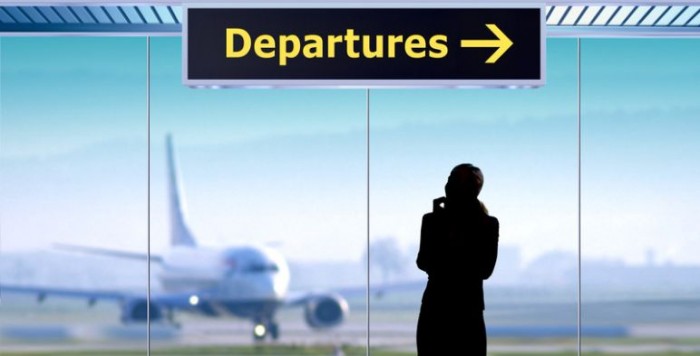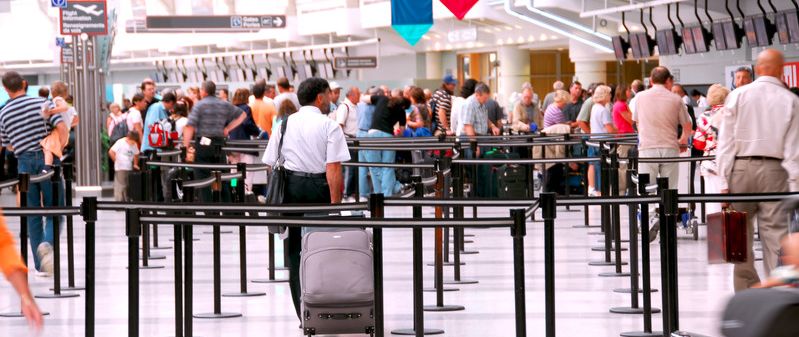Customs 101: Airport Updates to Know Now

From one airport to the next in different countries, some customs rules will differ but as far as liquids, natural products, sporting goods, and jewelry; they will be more or less the same. Here’s a look at customs and security abroad including a closer look at these three popular tourists destinations: United States, Europe, and Australia.
Liquids
The Travel Security Administration (TSA) of the Department of Homeland Security from the United States follows the 3-1-1 liquids guideline for carry-on luggage.
- 1 quart-size clear plastic bag
- 1 bag per passenger
- 3.4 ounce (100ml) or less bottles of liquid
If you need to take larger amounts of liquid such as medicine, baby formula, breast milk, and food items then you will have to declare them for additional inspection before you board your plane.
Similar to the United States, in Australia you can carry containers that are 3.4 ounces (100ml) in a resealable bag onto airplanes. If you wish to purchase any duty-free items on your flight to Australia, you may only purchase them at the last airport before arriving in Australia. Therefore, if you have to make one transfer between two different locations before reaching Australia, purchase duty-free items at the second airport.
For Europe, the 3.4 ounces (100ml) containers is the same as well and must be carried in a clear at maximum 1 liter bag, but the restriction does not apply to medicines and baby formula. After you have entered any country that is part of the European Union, your duty-free purchases are okay as long as your final flight destination is within the EU.
Natural products: meat, vegetables, fruit, wood
Airlines are pretty strict about restricting which types of meat, vegetables, fruit, wood, and other natural products are allowed to leave and enter foreign countries in order to stop the introduction of foreign insects, pesticides, and bacteria. Your best option is just to leave all of your fruits, vegetables, and meat at home or if you have any with you, be sure to eat it before the security check point or throw it away because otherwise it will be confiscated for all international flights between countries. If you are flying within the United States (excluding Hawaii and Alaska), then you are okay to bring food past the security point. Otherwise, just buy something in the duty-free shops and concession stands at the airport.
You can bring products made from wood into the United States on your flight as long as it does not include wood with bark attached and particularly any wood from China. As far as customs goes for bringing natural products into Australia, greater caution needs to be taken into consideration because it is an island. Custom regulations are very strict with food, plants, and animals that are brought to this country to keep out pests and diseases from foreign countries.
If any diseases should reach the agriculture, livestock, or other plants; it could be very harmful for not only the wildlife, but for everyone who live there as well. Even food that is given to you on the plane during your trip is banned from entering the country. You can either declare these items or just throw them away in the garbage bins before you go through customs. If you do decide to declare it, some options include:
- Pay for a safe treatment so you can bring it with you
- Leave it in a locker at the airport
- Send the item back to where it was purchased
Some items might not seem so obvious, but if they are made out of any plant material, then you should avoid bringing them with you or even mailing them to Australia. Items to avoid include:
- Anything made or filled with straw
- Cushions
- Mats
- Bags
- Bamboo
- Baskets
- Furnishing
- Potpourri
- Coconut shells
- Dried flowers and leaves
Shipping methods need to be taken into great consideration besides regulating what travelers bring and take back home with them. Packaging that includes wood as the main material also must go through different chemical treatment steps to ensure that no pests and diseases are carried when importing and exporting materials.
Sporting goods
For sporting equipment, you will not be able to bring anything on board the airplane that could be used as a weapon such as baseball bats, lacrosse sticks, or golf clubs. However, you can bring them in your checked luggage and some sports equipment such as skates (rollerblades and ice-skates without the blade) are allowed on the flight in a carry-on bag.
Jewelry
When it comes to taking jewelry through customs at the airport, it might be best to keep your expensive pieces at home to keep them safe. If you do decide to bring expensive pieces with you to wear during your trip or if you purchase jewelry while abroad, you will have to declare it to airport officials at security checkpoints. TSA recommends a private screening for travelers with expensive jewelry or large amounts of money to help maintain your own security from other travelers.
Do you have any tips to traveling abroad and passing through customs? What has your experience been with bringing these items on your trip?
You may also like ...
- Elegant Costume Jewelry For This Fall
- Just How Well Will A Jewelry Cleaning Recipe Work? The Best Methods To Try To Clean Gems At Home
- Top Household Jewelry Cleaning Tips For Silver Jewelry
- Fun Jewelry Trends For Fall 2013 To Amp Up Your Style
- How To Choose Jewelry For Sensitive Skin
- Centuries Full of Meaning: Different Symbols from Different Cultures














